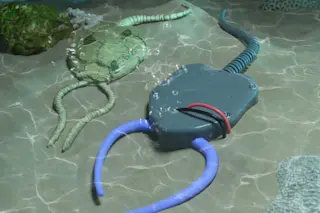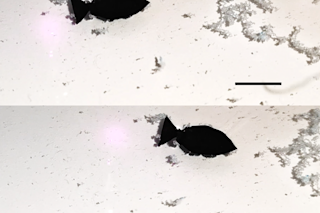What’s the News: Nature invented the wheel a good long time before we did: just look at the crazy antics of the mother-of-pearl moth caterpillar, which, when attacked, springs into an airborne coil in less than 60 milliseconds, spinning and twisting in the air like a snake from a can. Now robotics researchers have build a caterpillar robot that mimics that behavior, providing insight into how caterpillars manage it and suggesting new uses for some types of robots. How the Heck:
The robot, called GoQBot for the Q shape it takes in flight, is a 10-cm tube of soft silicone rubber. It’s what’s called a soft-bodied robot, in contrast to the rigid materials used in most other varieties.
Instead of muscles, the robot has two long shape-memory alloy coils running along the length of its body. Shape-memory alloys are metals that “remember” the first shape they are forged into—you can ...













